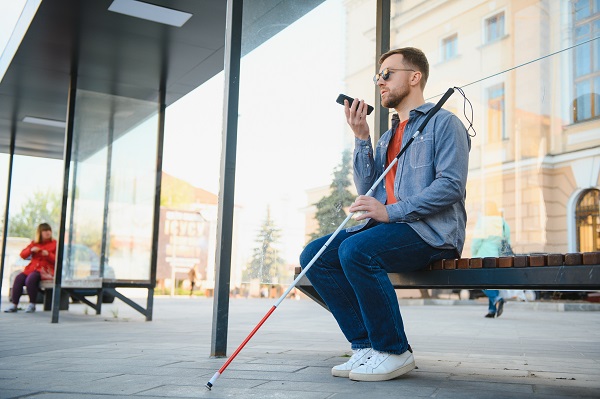State of Colorado Accessibility Newsletter - September 2024

Accessibility News
Providing more accessibility guidance
By Karen Pellegrin (she/her), TAP Manager
TAP has updated the Accessibility Law for Colorado State and Local Government web page on the OIT website, making it easier to find frequently requested information about Colorado’s accessibility law, the rules, and how to reach compliance. Specifically, the rules are intended to provide a reasonable path to compliance while also providing equitable levels of service to people with disabilities. They are not intended to hamper the availability of government services and information in any way.
- Progress, not perfection: Public entities don't have to make all their digital content accessible overnight. However, they must show they are making progress toward accessibility.
- Don't remove inaccessible content: Public entities should not remove inaccessible documents and resources from their websites. Instead, they should ensure that it’s easy for people to find a point of contact if they need to request a reasonable accommodation while working towards making those online resources accessible.
- Compliance with the rules = compliance with the law.
- House Bill 24-1454, also known as the Grace Period Bill, is not an automatic extension of the July 1, 2024 deadline for compliance: Rather, it may provide public entities a one-year grace period to July 1, 2025 of immunity from liability for failure to comply with the rules if that agency demonstrates good faith efforts toward compliance or toward resolution of any complaint of noncompliance.
Accessibility documentation and what to do with it
By Karen Pellegrin (she/her), TAP Manager
As part of your ongoing accessibility journey there are a number of documents that you may be managing as part of vetting, testing and remediating digital products. These could be anything from your accessibility implementation plan to product reports and accommodations plans. And, for all of this documentation, you will want to have it available when needed and preferably in one place for easy access. This can help with your own internal efforts as well as provide proof of your ongoing good faith efforts to make products accessible.
Here are some of the documents you will want to have and why:
- Accessibility implementation plan: The accessibility implementation plan is the document that shows what you know, what you have, what you have done and what you are still working on. It’s important to regularly check in on this plan and update it as things change. This is also a major element of proof that you are continuing to “improve accessibility in good faith”.
- Note that if you are leveraging the Grace Period and are creating quarterly reports on your progress, you can use that reporting to help develop your long term plan.
- Compliance reports: As you engage vendors to procure products (apps, web platforms, software, etc.) you will want to get a baseline understanding of the accessibility of that product by asking a series of accessibility-related questions and obtaining a compliance report (i.e., a VPAT). Note that it is recommended you obtain these reports yearly or whenever a major upgrade is made to the product, if possible.
- Testing reports: These reports are developed through manual and automated testing efforts and show the current accessibility status of the product as it relates to WCAG 2.1 A and AA. They are used to help identify and fix (i.e., remediate) issues and are also good to have on file to inform internal teams on where users may need additional assistance or accommodations.
- Remediation reports: Remediation reports are those that come from automated tools such as PDF reports or manual reports showing what bugs developers have fixed in websites and applications. They show what outstanding issues from testing reports have been fixed in compliance with the WCAG 2.1 A and AA guidelines.
- Accommodation plans: Accommodation plans typically outline how you intend to assist users in accessing the product, based on known accessibility issues, via accommodations. You can document this information using an Equally Effective Alternate Access Plan and this plan can assist your customer support and service desk teams as well as others who assist with accommodations such as your human relations (HR) and ADA coordinator teams.
- Undue burden documentation: When a government entity does not have the significant financial, technical or administrative resources needed to make a product fully accessible, undue burden documentation should be created to state your case. This includes a description of the product, a summary of the accessibility issues, and summary of (or link to) your accommodations plan. Typically, this documentation should be reviewed and updated as fixes are made, or every year. It is used as a reference to help understand the “burden” to making the product accessible as well as provide proof of your ongoing efforts to improve accessibility.
All of this documentation can be developed as part of your ongoing accessibility work and processes can be developed within your organization to help capture and organize it. None of it is required but all of it can help improve your efforts and provide solid proof that you are putting good faith work into those efforts.
Accessibility Question of the Month
Do I need to make third party documents accessible?
When individuals or groups outside of government provide documents that your organization has not developed or procured this is usually called third party content. This can be things such as contract plans from residents or builders, book reports from students and local contest submissions.
- “Third parties sometimes post content on state and local governments’ websites or mobile apps. Third parties are members of the public or others who are not controlled by or acting for state or local governments. The state or local government may not be able to change the content of a third party’s post.” Fact Sheet: New Rule on the Accessibility of Web Content and Mobile Apps Provided by State and Local Governments”, ADA.gov
Documents submitted by the public or individuals outside of government entities do not need to be made accessible. When an employee or the public needs to access these documents after submission, the government entity can choose to either remediate the document at that point or provide another reasonable accommodation.
However, if the government entity then takes this third party documentation and rolls it into other documentation created by the government entity, that entity is then taking ownership of the document and therefore needs to make it accessible.

Chelsea's Corner
Live shows can be accessible, too!
By Chelsea Cook (she/her), TAP Accessibility Consultant
Last month, I talked about audio description for recorded media. This month I'd like to let you know about another aspect of description that can be decades old or brand new: audio description of live events.
I have attended several live events that offered description: a couple of Colorado Rockies baseball games, lots of live theater, and watching movies at the cinema. In each case, the technology employed to get extra audio content to your ears and your ears alone is one that's been around for years: radio.
That's right, radio! When you go to an event (live theater usually has one or two accessible dates), you request a device and headphones from the guest relations person and they program it for the specific show you are seeing. Then once you are seated, you put on the headphones, adjust the device (radio frequencies can be finicky, after all), and a describer will start talking just before the show. This is to give you an idea of what the set and costumes are like because there is often no time to describe these elements once the performance is in action.
The first audio-described play I saw on Broadway was Mamma Mia— not counting the whispered descriptions from my family members. It was amazing! I had never before had access to information about how detailed the costumes were. I finally felt like I could participate in the full experience. Wicked was the next show I saw in New York, which just cemented my love of musicals.
Going to the cinema is a similar process, though movie descriptions are still the pre-recorded versions that come with the film. I started noticing movies with descriptions being offered in cinemas about 10 or 15 years ago, and now most theater-releases offer them. Sometimes the guest relations people make a mistake and either the device doesn't work well or they give me the amplified hearing version, which is not the preset I need. I hate missing the first five or 10 minutes of the movie because I had to run back to get a new device.
Sporting events are a little bit different. Some venues, such as Minute Maid Park in Houston, actually do provide radios to fans. Some people bring their own portable radios. When I attended the Rockies games, I listened to the radio commentary by streaming it on my smartphone. This had the interesting consequence of being delayed by 30 to 60 seconds, so you would hear people cheer and then think, "Hmmm, something important happened. Guess I'll find out in a little bit."
Access to live events has expanded in recent years. It may take some digging on an event’s website or some planning and requesting ahead of time, but audio description (and captions or ASL interpretation) is out there. I feel so fortunate to live in Denver where there is so much to do and I’m included in all of it.
Accessibility and You
Plain language for accessibility’s sake
By Kelly Tabor, TAP Communications Manager
A powerful way to advance digital accessibility that requires no technical expertise is to use plain language. Plain language refers to clear, straightforward communication that avoids unnecessary jargon, complex sentence structures and specialized terms. Part of accessibility is delivering information in a way that can be easily understood by a broad audience, regardless of their education, experience or abilities.
While WCAG standards emphasize that plain language benefits everyone, it is crucial for people with cognitive disabilities such as dyslexia or ADHD, those who struggle to follow complicated text, and those who speak English as a second language.
Using clear headings, short sentences and bullet points can make it easier for individuals using assistive technology, such as screen readers, to navigate and consume online content. Simplifying and breaking down complex words and concepts can also help prevent misunderstandings that may lead to costly errors and missed opportunities. Consider how a legal document written in plain language vs. complicated legalese can mean the difference between someone understanding their rights or not. Visit the U.S. General Services Administration’s plain language website for more examples.
Plain language enhances usability and accessibility in a world that thrives on information. By implementing this practice on our websites, applications, and documents, we can avoid excluding community members and ensure that people from diverse backgrounds can consume the information they need.
Check out OIT’s Guide to Plain Language.
Notable & Quotable
“Focus not on the differences of people with disabilities but the talent of the individual.”
- Neil Milliken, Vice President and Head of Accessibility & Digital Inclusion at Atos, a global IT company
